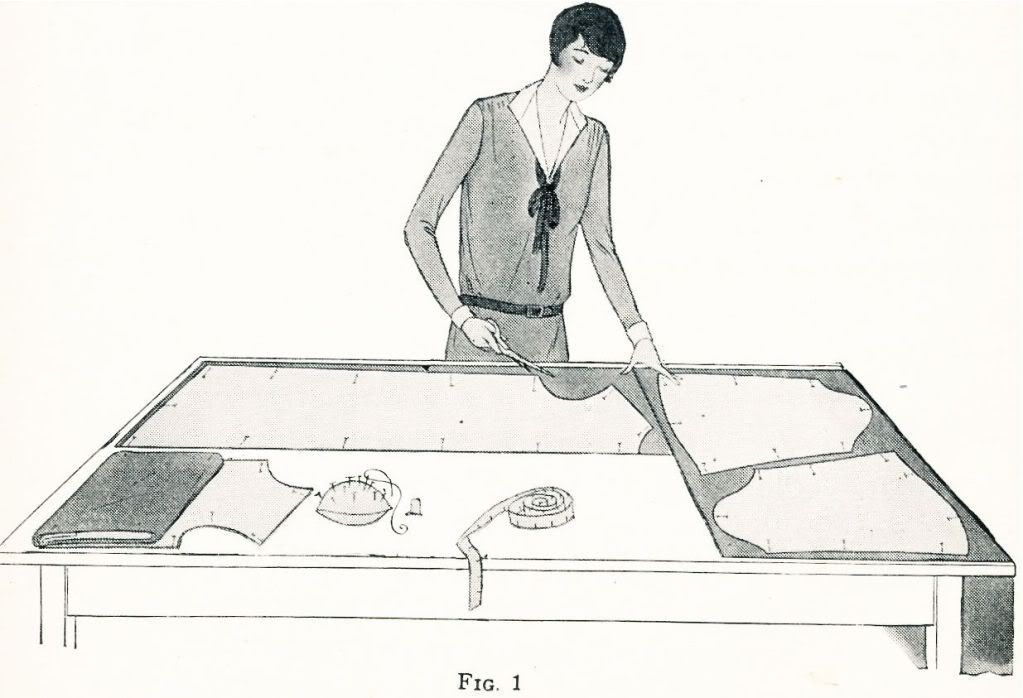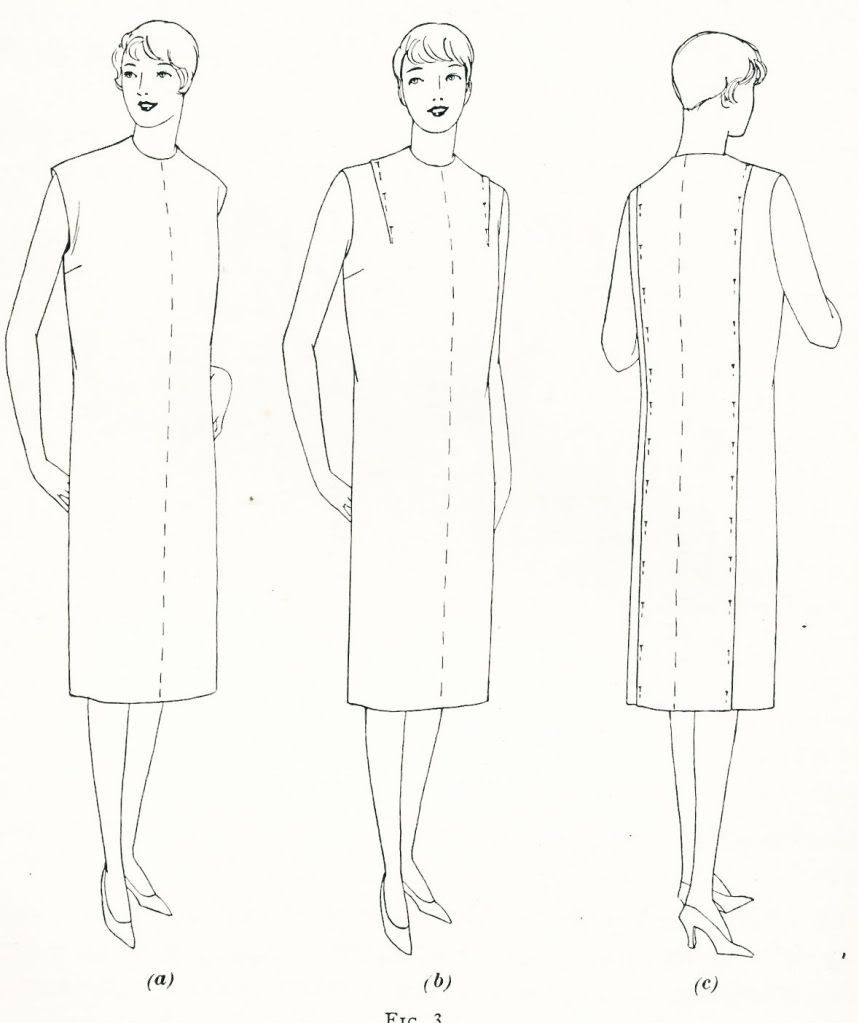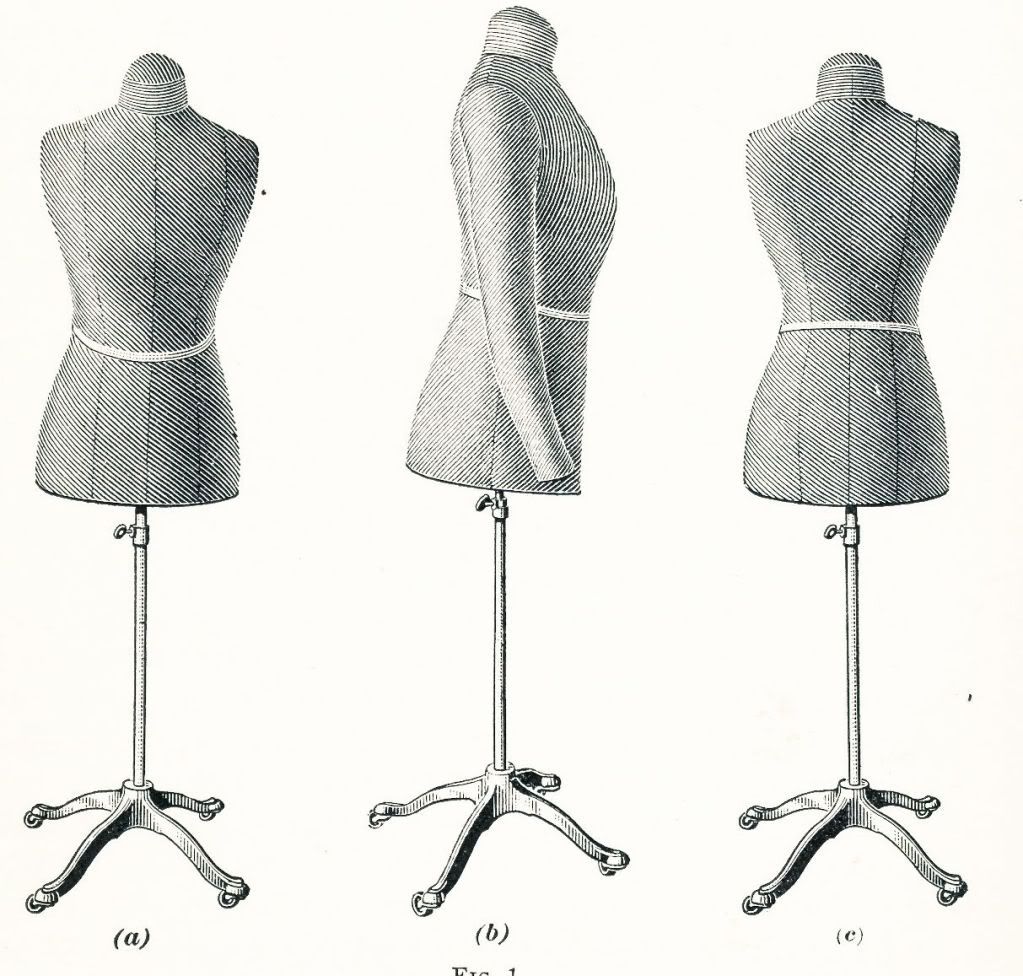
"To spread out the material on which to arrange the pattern pieces before cutting, it is necessary to have a large smooth, flat surface. This should be a table, a good type being shown in Fig. 1. A bed, which is sometimes used, is not satisfactory as it does not have a firm surface and so makes accurate cutting difficult. If you do not have access to a large table, a large piece of wall board, which can be laid on the bed when needed and stored in a closet when not in use, will help to solve your problem."
" The slip shown in Fig. 14 illustrates the type of foundation that is often necessary for the coat dress that opens at the side front. A section of the material of the dress is added so that the skirt, in swinging open, does not show a contrasting rnaterial. The shape and width of this section will depend on the cut of the dress to be worn over the slip. Also, a vestee is attached, a feature that is often necessary in both coat and other types of dresses. Two lengthwise darts in the back give an opportunity to fit the slip as snugly as desired. Either the built-up or camisole may be used."
" Shoulder of Garment Too Wide.-In making patterns for the larger sizes, the width of the shoulder is sometimes increased in proportion to the size of the bust. However, in the figure itself the size of the shoulder, which is a bony structure, does not often increase in proportion to the increased measurement of the bust, which is a tissue structure. So it often happens that a pattern, purchased by bust measurement, provides a shoulder that is too wide, as shown in Fig. 3, view (a). The same defect occurs in smaller sizes when the shoulders of the figure are unusually narrow. Or, if the material used is one that stretches on the cross grain, such as some of the knitted fabrics, a similar problem often arises."
"Because of variations in the measurements of different persons, it is rarely possible to obtain a solid form duplicating exactly the individual figure. The best plan, therefore, is to procure a form seemingly smaller than is required and increase it to individual measurements by the use of a padding of cotton batting and a tight lining. A dress form that has been padded is shown in Fig. 1 view (a) showing the front view, (b) the side with arm attached, and view (c), the back.
To prepare such a form, first make a tight lining that exactly fits the figure. Then pad the form and apply the lining and the arms."
Saturday, April 17, 2010
The Woman's Institute - Cutting And Fitting - Part 3
This edition is called Cutting And Fitting. The copyright for this is 1928. This concentrates on how to correct fitting problems.
No comments:
Post a Comment